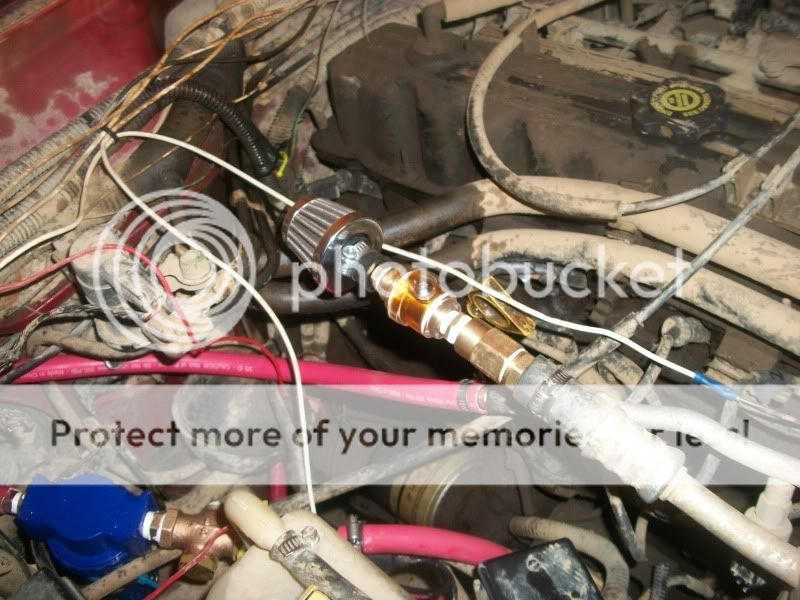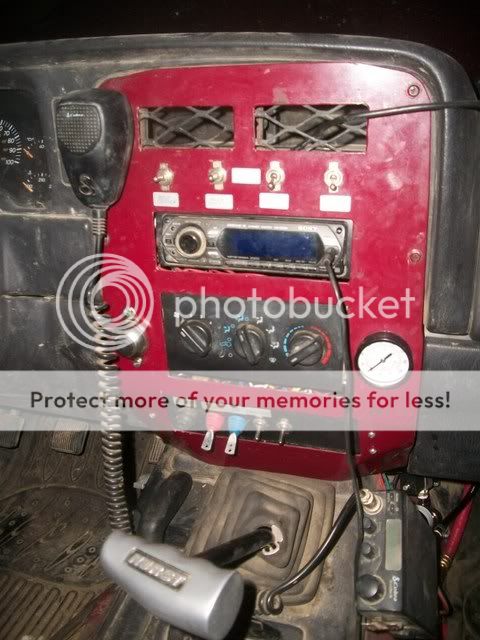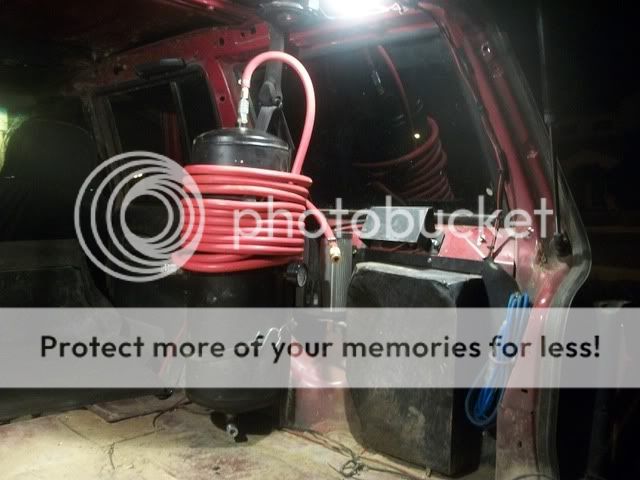SC Rednek
NAXJA Forum User
- Location
- Winchester TN
Finished this tonight! :yelclap:
'99 XJ, the A/C barely worked, and whenever it was hot enough to really want it, it would overheat the engine without much effect. Since I'm putting an ARB locker in my new d44 front axle, I needed a compressor and I've been wanting on board air for a while anyway.
So here's what I ended up with. It's slightly more complex than some of the builds I've seen, but I wanted something that will work well and leave room for expansion.
Tested it out, it takes 2 minutes to fill my tank at idle, 51 seconds at about 2000 rpm
If anyone wants details I can provide an exact list of everything I used.
Intake assembly. Stainless mesh filter, air tool oiler.

Output assembly. Filter, check valve, 3-port manifold, 110/145 pressure switch, line to the interior, 150 psi relief valve (well, currently a plug I'm still waiting for the valve to arrive in the mail).


Interior Manifold. From bottom to top, the line to the tank in the trunk, the line to the compressor, line to the dashboard gauge, regulator, and switch for the locker

Dashboard pressure gauge. The switch for the compressor is the far right of the lower row, just past the ignition switches. It was my A/C switch, I just cut out the old pressure switches and wired in the new one. To make up for the thickness of the metal, I wrapped a piece of 14 gauge wire around the inside of the cover to keep the glass from moving. And I still need to cut off a 1/4" of plastic behind the gauge so I can tighten down the dash piece, that's why there's a gap under the vent controls.



I still have to mount the tank, hopefully before the weekend. I plan on mounting in upright next to the second battery and inverter. It's a 4 port tank, with a T on the input end. There's 3 output ports, a gauge, and the input. The input has a cutoff valve so I can disconnect it without draining the tank.

'99 XJ, the A/C barely worked, and whenever it was hot enough to really want it, it would overheat the engine without much effect. Since I'm putting an ARB locker in my new d44 front axle, I needed a compressor and I've been wanting on board air for a while anyway.
So here's what I ended up with. It's slightly more complex than some of the builds I've seen, but I wanted something that will work well and leave room for expansion.
Tested it out, it takes 2 minutes to fill my tank at idle, 51 seconds at about 2000 rpm
If anyone wants details I can provide an exact list of everything I used.
Intake assembly. Stainless mesh filter, air tool oiler.

Output assembly. Filter, check valve, 3-port manifold, 110/145 pressure switch, line to the interior, 150 psi relief valve (well, currently a plug I'm still waiting for the valve to arrive in the mail).


Interior Manifold. From bottom to top, the line to the tank in the trunk, the line to the compressor, line to the dashboard gauge, regulator, and switch for the locker

Dashboard pressure gauge. The switch for the compressor is the far right of the lower row, just past the ignition switches. It was my A/C switch, I just cut out the old pressure switches and wired in the new one. To make up for the thickness of the metal, I wrapped a piece of 14 gauge wire around the inside of the cover to keep the glass from moving. And I still need to cut off a 1/4" of plastic behind the gauge so I can tighten down the dash piece, that's why there's a gap under the vent controls.



I still have to mount the tank, hopefully before the weekend. I plan on mounting in upright next to the second battery and inverter. It's a 4 port tank, with a T on the input end. There's 3 output ports, a gauge, and the input. The input has a cutoff valve so I can disconnect it without draining the tank.

Last edited:


 I think a little over a year ago. If I remember right it was originally built as an air ride tank. Rated to 150 psi.
I think a little over a year ago. If I remember right it was originally built as an air ride tank. Rated to 150 psi.